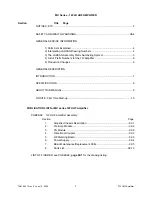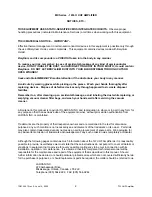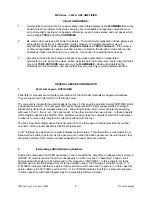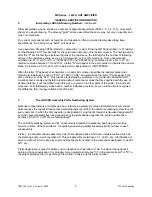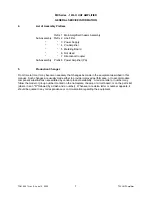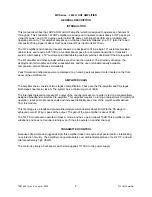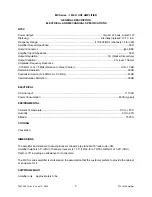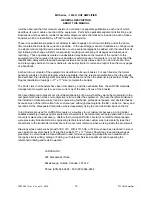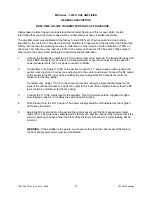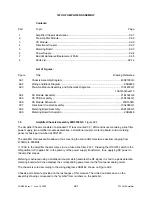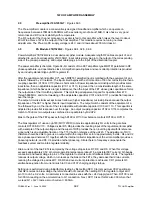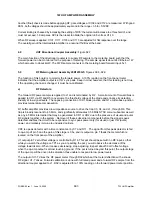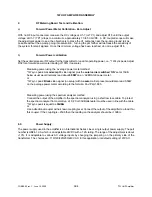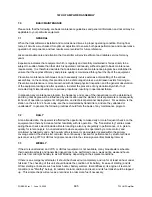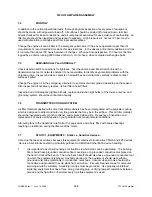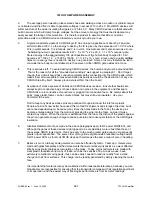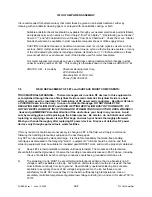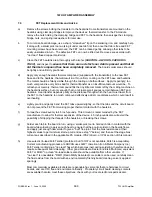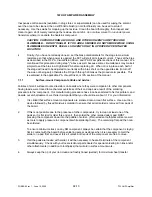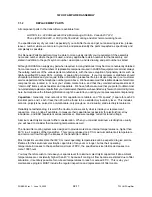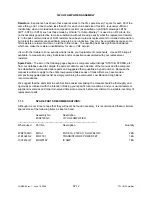
1W UHF AMPLIFIER ASSEMBLY
PUB99-92 rev 1: June 19, 2000
92-3
1
W UHF Amplifier
Another (final) check is made before applying RF: gate voltages at C102 and C112 are measured. With good
FETs, both voltages should be approximately equal and in the range +3.5 to +5.5VDC.
Current limiting is checked by increasing the setting of RV3; the current will increase to a threshold of, and
must not exceed, 1.6 amperes. RV3 is then reset to obtain the or6.5 volts at U1-10.
When RF sweep is applied, C101, C111, C103 and C113 are adjusted for flat response over the range.
The overall gain of the Intermediate Amplifier is a nominal 15dB over the band.
4.0
UHF Directional Coupler Assembly:
Figure 92-7
The main function of the directional coupler is to supply RF sample to the metering board such that the
forward power can be monitored for the purpose of metering. The sample signal is about 24 dB below 1W
which amounts to about 4mW. The FWD sample connects to the metering board forward input, 5J1.
5.0
RF Metering Board Assembly 20B1235G5:
Figures 92-8, 92-9
The function of this board is to monitor the forward power. A 100% reading on the front panel meter
indicates that the amplifier output is at 1W sync peak. Keep in mind, however, that this reading is not true
if the operating channel is changed. It must be re-calibrated.
a) RF
Detectors:
The forward RF power sample is applied to J1 and is terminated by R2 . A small amount of forward bias is
applied to CR1 via R1 and R5 to overcome the threshold voltage of the diode and enhance its detection
linearity at low signal levels. The opposing connection of CR1 diode junction and Q1 emitter-base junction
provides temperature compensation.
Q1 buffer amplifier provides a low impedance source to drive the trap C3, C4, and L1, through R9. This
trap is broadly resonant to 4.3 MHz, and significantly attenuates 3.58 MHz NTSC colour subcarrier as well
as any 4.5 MHz intercarrier that may be generated in CR1 or CR2 due to the presence of visual and aural
RF signals together in the system. Removal of these subcarrier components before the signal is peak
detected, enables the circuit to be responsive to sync peak power only (for visual) or just CW (aural)
power, and relatively immune to undesired carriers.
CR3 is a peak detector with a time constant set by C7 and R11. The signal from this peak detector is fed
to op-amp U1pin 5 and the gain of this stage is 0.5x, and its output on pin 7 feeds the meter which is
located on the front panel of the amplifier.
U1 output pin 7 zero-offset voltage is controlled by R18. This pot should be set with no RF input, so that
while you watch the voltage on TP1 as you are setting the pot, you will observe the decrease of the
voltage towards zero. When it ceases decreasing, stop adjusting. Expect about 50 mV offset voltage
when the op-amp output is almost touching ground. If the pot is turned beyond this point, the output stage
of the op-amp will be driven into saturation thus unable to respond to low power levels.
The output of U1-7 drives the RF power meter through R32 which set the meter deflection with a known
RF signal. U1-7 drives. Forward calibration is done with full rated power and a forward RF sample from the
directional coupler applied to J1. R32 is adjusted for a 100% reading on the forward power meter position.

